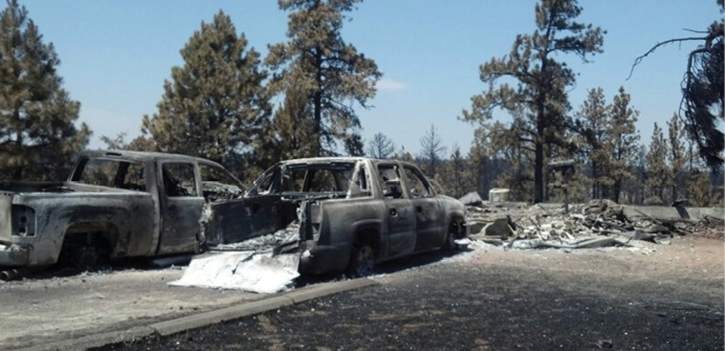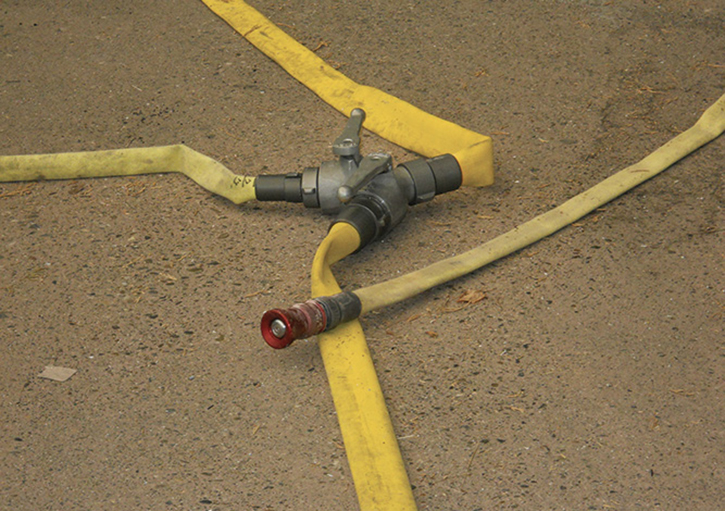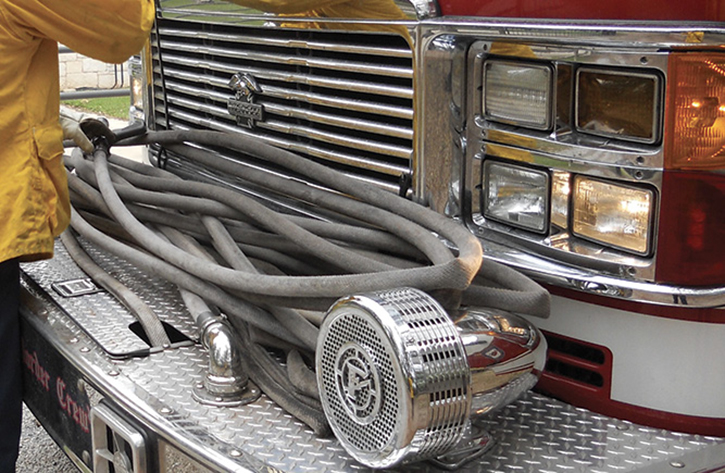
Wildland Urban Interface ❘ By Brandon Woodward
It’s late April as of this writing, and in Texas, this signals the back end of the winter fire season. Many of our largest and most devastating fires have occurred during this time of year. Areas across the nation have seasons of wildfire, many with which you are probably familiar. Regardless of where you work, there is the potential for you to be dispatched to an emerging wildfire that is threatening homes and putting other values at risk. In most cases, these fires move very quickly, produce extreme fire behavior, and can be deadly to civilians and firefighters. Preparation and knowledge are the best tools for effectiveness, and knowing your enemy is the best tool to keep you and your personnel safe. Following are some helpful tips and basic facts when faced with these events.
RELATED FIREFIGHTER TRAINING
Initial Attack in the Wildland Urban Interface
The Incident Response Pocket Guide (IRPG) outlines the four categories that values at risk fall into:
- Stand Alone—the home or other value at risk that has been properly prepared and needs little or no attention to remain safe from the fire.
- Prep and Defend—a value at risk that requires some attention from firefighters to remain safe and has enough clearance from the fuels to allow firefighters to remain there safely.
- Prep and Leave—a home or value at risk that needs further preparation to be defensible but does not have a safe place for firefighters to remain there safely.
- Rescue Drive By—circumstances of time or lack of resources make this home unsafe for firefighters to perform preparations; the best choice is to ensure that the occupants have been warned of the danger.

(1) The Incident Response Pocket Guide. (Photos by author.)
Armed with this knowledge and time spent identifying these types of areas in your jurisdiction, you can make sound decisions about your level of tactical engagement. Firefighters across the country are forced to make these decisions every year. The most successful outcomes occur when they have prepared themselves with a thorough understanding of fire behavior. I strongly recommend that every firefighter engaged in wildland urban interface (WUI) firefighting take additional training, especially S-290 Intermediate Wildland Fire Behavior.

(2) A residence and vehicles destroyed in a fast-moving WUI fire. Firefighters were unable to provide protection because they were unable to remain there safely.

(3) A progressive hoselay used to provide protection for several homes on the street.

(4) Innovative use of the front of the engine to secure the attack line after using it at another structure.

(5) Firefighters wait out the initial flaming front from a safe position in front of the home.
Scenario
The decision has been made, using this guideline from the IRPG and a thorough understanding of fire behavior: Your engine is tactically engaged at a residence identified as a Prep and Defend. You have seen the terrain and fuels. You have seen the fire behavior and, based on that estimation, you have decided to stay. What now?
Communicate your intentions. Talk to your supervisor and any other resources in the area—first, by radio and, if necessary, face-to-face. Remember that other strike team and task force resources may be on other frequencies. Figure that out beforehand. Now is not the time to be digging through the glove box for that cheat sheet that may or may not be in there.
Clearly mark the access point. Be creative: Mark it with flagging, glow sticks, placards, grease markers, or a handwritten sign on a meal-ready-to-eat box. If access is narrow and an approaching engine would block your escape, block off the entrance with flagging and write your call sign and the time on the flagging. If you are working on a street with multiple resources, have the supervisor or law enforcement manage the street so that your escape route is not blocked. It is your responsibility to ensure that you can escape!
Dress for success. This is not the time for you or your teammates to be only partially ready to go to work. Sleeves down, shroud down, gloves on! If your department has provided it, use it! I recommend goggles that prevent smoke from getting in your eyes as opposed to sunglasses at this point. Don’t risk a debilitating blast of smoke and heat that stops you in your tracks. Put on your pack and fire shelter. You won’t be remounting the engine unless it is to retreat.
Place to escape. If you’ve decided to stay there, then you’ve already sized up the apparatus placement possibilities. Use shielding to your advantage, and be ready to leave the second that you arrive. The engine should be running, the windows should be up, and the lights should be on. Don’t let constructs of driveways and pathways preclude you from getting that engine in the right spot. Park in the flower beds if that’s the best place to be!
Dismount ready to fight fire. Although the presumption is that this is a Prep and Defend, which means that you probably have some time to prepare, get off the engine with purpose. Get lines in place and charge them. What size lines? Hoselines that will flow enough water to combat the amount of heat predicted at your location. If you have only 1¾-inch hoseline, then that will have to do, won’t it? If you have one-inch and ¾-inch lines, they might very well be sufficient for the predicted fire behavior. Remember, it’s all about the predicted fire behavior! Have tools at the ready. Don’t just get out the shovels and rhinos. Other tools are helpful like ladders, leaf blowers, garden rakes, chain saws, and halligans, to name a few. Only then, take a deep breath and begin the work of preparation.
Secure water. If you are fortunate enough to have an operating hydrant system in the neighborhood or area, by all means, use it! It would be best not to make a mess of the streets with large supply lines running everywhere, making access difficult for others. So, one option would be to prepare a nearby hydrant with a short section of 2½-inch line, a gated wye, and two short sections of 1½-inch line to fill with. If this doesn’t work for the situation, consider just using garden hoses at the residence to keep the tank full on your engine.
Move your feet. Your initial 360° survey around the location will be the first of many laps. This is true for all the members. You will be constantly moving around, watching waves of fire brands as they fall, looking for spot fires, assessing fire behavior, putting out spot fires, and checking on one another. Along with all the preparation that you can do around the structure, constantly assessing the approaching fire behavior is essential.
There is much more to know and understand about engine operations in the WUI, but for now, developing a thorough understanding of fire behavior and what challenges you will face is a pretty good start.
BRANDON WOODWARD is a captain with the Lewisville (TX) Fire Department and also serves as a division supervisor for the U.S. Fish and Wildlife Service. He has been an instructor for the past two decades at venues across the country, including wildfire academies in Arizona, Colorado, and Texas. He is also the program leader for the Elm Fork Fire Module and serves as the state chain saw coordinator for the TIFMAS program.

